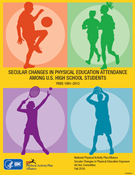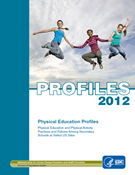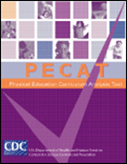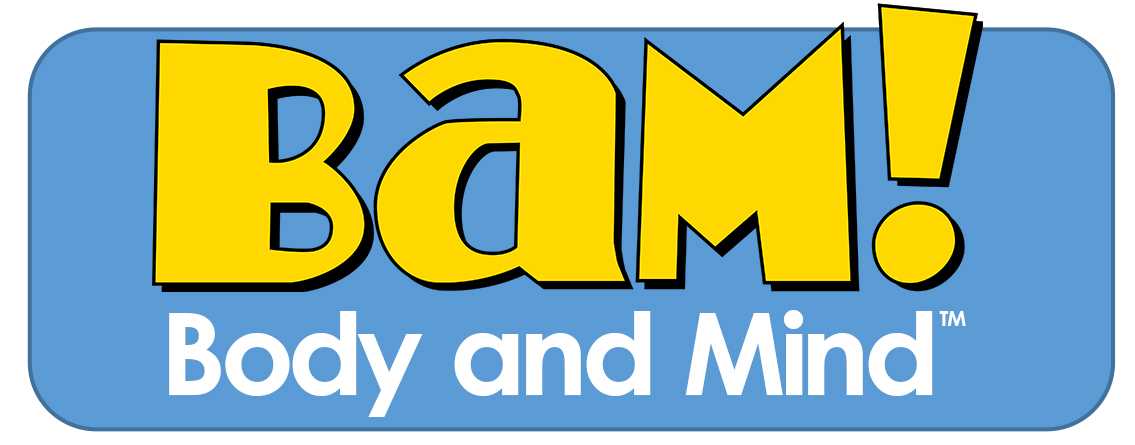Physical Education
Physical Education Defined
Physical education is the foundation of a Comprehensive School Physical Activity Program.1, 2 It is an academic subject characterized by a planned, sequential K–12 curriculum (course of study) that is based on the national standards for physical education.2–4 Physical education provides cognitive content and instruction designed to develop motor skills, knowledge, and behaviors for physical activity and physical fitness.2–4 Supporting schools to establish physical education daily can provide students with the ability and confidence to be physically active for a lifetime.2–4
Physical education benefits students by5–7
- Increasing their level of physical activity.
- Improving their grades and standardized test scores.
- Helping them stay on-task in the classroom.
Increased time spent for physical education does not negatively affect students’ academic achievement.
Secular Changes in Physical Education Attendance Among U.S. High School Students, YRBS 1991–2013

The Secular Changes in Physical Education Attendance Among U.S. High School Students report [PDF – 3 MB] explains the secular changes (long-term trends) in physical education attendance among US high school students over the past two decades. Between 1991 and 2013, US high school students’ participation in school-based physical education classes remained stable, but at a level much lower than the national recommendation of daily physical education. In order to maximize the benefits of physical education, the adoption of policies and programs aimed at increasing participation in physical education among all US students should be prioritized. Download the report for detailed, nationwide findings.
Physical Education Profiles

The Physical Education Profiles (PE Profiles) 2012 [PDF-2.13MB] summarizes the current state of the physical activity and the physical education policies and practices of secondary schools (e.g., middle schools, high schools) across 26 jurisdictions (18 states, 6 large urban school districts, 1 territory, and 1 tribe). The complete results of the 2012 PE Profiles provide stakeholders an opportunity to review the policies and practices of these schools and identify where these schools are following best practices and where improvement is needed.
Physical Education Analysis Tool (PECAT)

The Physical Education Curriculum Analysis Tool (PECAT) is a self-assessment and planning guide developed by CDC. It is designed to help school districts and schools conduct clear, complete, and consistent analyses of physical education curricula, based upon national physical education standards.
Resources
- CDC Monitoring Student Fitness Levels1 [PDF – 1.64 MB]
- CDC Physical Education Curriculum Analysis Tool
- CDC Ideas for Parents: Physical Education [PDF – 2 MB]
- CDC Youth Physical Activity Guidelines Toolkit The Association Between School-Based Physical Activity, Physical Education, and Academic Performance [PDF – 2.53 MB] (Full report) Executive Summary [PDF – 309 KB]
- The Essential Components of Physical Education [PDF – 391 KB]
- Appropriate Instructional Practice Guidelines for Elementary, Middle School, and High School Physical Education [PDF – 675 KB]
- National Standards and Grade-Level Outcomes for K–12 Physical Education 2013
- State Physical Education Standards Database
- SHAPE America resources
References (expand to view)
- Centers for Disease Control and Prevention. A Guide for Developing Comprehensive School Physical Activity Programs. Atlanta, GA: Centers for Disease Control and Prevention, US Department of Health and Human Services; 2013.
- Centers for Disease Control and Prevention. School health guidelines to promote healthy eating and physical activity. MMWR. 2011;60(RR05):1–76.
- Institute of Medicine. Educating the Student Body: Taking Physical Activity and Physical Education to School. Washington, DC: The National Academies Press; 2013. Available at: http://books.nap.edu/openbook.php?record_id=18314&page=R1.
- SHAPE America. The essential components of physical education. Reston, VA: SHAPE America; 2015. Available at: http://www.shapeamerica.org/upload/TheEssentialComponentsOfPhysicalEducation.pdf [PDF – 392 KB].
- Centers for Disease Control and Prevention. The Association Between School-Based Physical Activity, Including Physical Education, and Academic Performance. Atlanta, GA; Centers for Disease Control and Prevention, US Department of Health and Human Services; 2010.
- Centers for Disease Control and Prevention. Health and Academic Achievement. Atlanta: US Department of Health and Human Services; 2014.
- Michael SL, Merlo C, Basch C, et al. Critical connections: health and academics. Journal of School Health. 2015;85(11):740–758.
- Page last reviewed: June 28, 2017
- Page last updated: June 28, 2017
- Content source:



 ShareCompartir
ShareCompartir